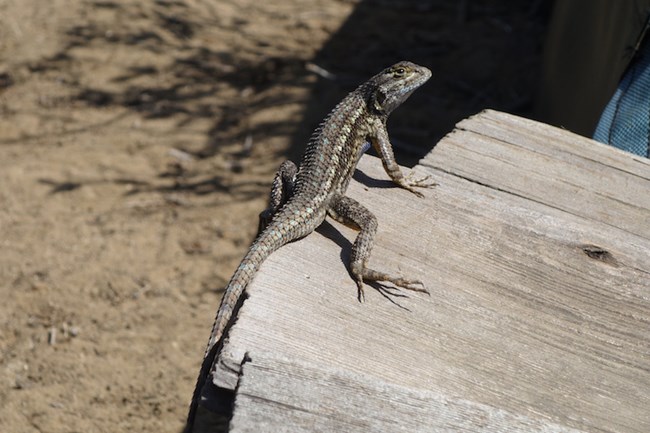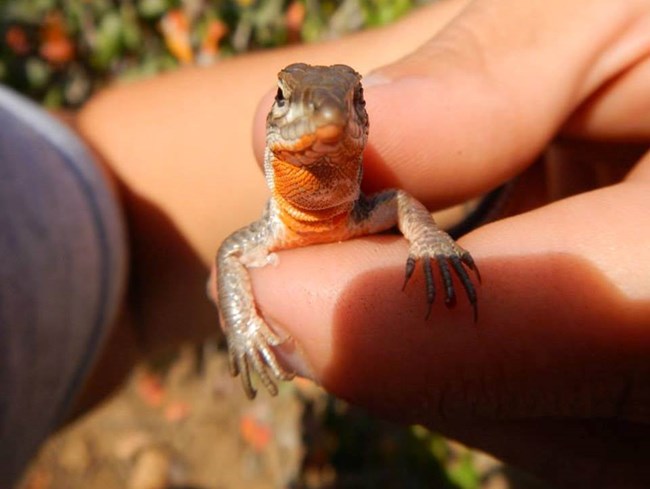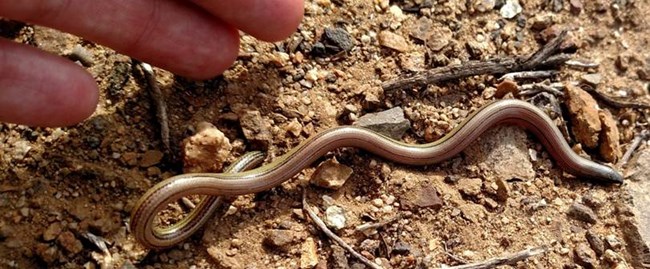Lizards at Cabrillo National MonumentCabrillo National Monument is home to a diverse array of lizard species, each contributing to the unique ecological tapestry of the park. Visitors to Cabrillo can encounter several fascinating lizards, such as the Belding’s orange-throated whiptail, the San Diego alligator lizard, and the Southern California legless lizard. These lizards play crucial roles in controlling insect populations and maintaining ecological balance. For instance, the Belding’s orange-throated whiptail, with its striking orange throat and agile movements, thrives in the protected environment of the monument. The San Diego alligator lizard, with its robust body and snake-like locomotion, is often seen basking in the sun or hunting for small invertebrates. The elusive Southern California legless lizard, which spends much of its time underground, adds to the rich biodiversity of Cabrillo. Together, these lizards enhance the natural beauty and ecological significance of Cabrillo National Monument, offering visitors a glimpse into the dynamic and interconnected world of reptiles. 
NPS Photo / Don Endicott Great Basin Fence Lizard (Sceloporus occidentalis longipes)The Great Basin fence lizard, a subspecies of the Western fence lizard, is commonly found in the Great Basin region of the United States, inhabiting a variety of environments such as forests, grasslands, and shrublands. This adaptable lizard is known for its distinctive appearance, featuring rough, spiny scales and a characteristic blue coloration on its belly, especially prominent in males. Diet and BehaviorPrimarily an insectivore, the Great Basin fence lizard feeds on a diet of small invertebrates, including ants, beetles, flies, and spiders. Its feeding habits help control insect populations, contributing to the ecological balance of its habitat. The lizard is diurnal, meaning it is active during the day, and it often basks in the sun to regulate its body temperature. Ecological SignificanceOne of the most significant benefits of the Great Basin fence lizard to humans is its role in reducing the incidence of Lyme disease. Lyme disease, caused by the bacterium Borrelia burgdorferi, is transmitted to humans through the bite of infected black-legged ticks (Ixodes scapularis). Research has shown that a protein found in the blood of the Great Basin fence lizard kills this bacterium within the ticks, rendering them incapable of spreading Lyme disease. This natural defense mechanism significantly lowers the risk of Lyme disease in areas where these lizards are abundant. Habitat and DistributionThe Great Basin fence lizard is widely distributed across the Great Basin region, which spans several states including Nevada, Utah, Oregon, and California. It thrives in a range of habitats from arid deserts to mountainous regions, often seen basking on rocks, logs, and fence posts. The lizard's ability to adapt to various environments makes it a resilient species, well-suited to the diverse climates of the Great Basin. Conservation and StudyWhile the Great Basin fence lizard is not currently considered endangered, it plays a crucial role in the ecosystems it inhabits. Ongoing studies of its behavior, diet, and ecological interactions continue to provide valuable insights into the benefits it offers, particularly in controlling disease vectors. Conservation efforts focus on preserving its natural habitats and understanding the impacts of environmental changes on its populations. In summary, the Great Basin fence lizard is not only a fascinating and adaptable reptile but also a key player in the natural control of Lyme disease, showcasing the intricate connections between wildlife and human health. 
NPS Photo / Warren Tam Western Side-Blotched Lizard (Uta stansburiana elegans)The Western side-blotched lizard is a small, agile reptile commonly found in arid and semi-arid regions of the western United States, including deserts, shrublands, and rocky outcrops. This species is well-known for its adaptability and is frequently observed basking in the sun on rocks or scurrying through the underbrush in search of food. Diet and BehaviorThe Western side-blotched lizard primarily feeds on small invertebrates such as insects, spiders, and other arthropods. This diet plays a crucial role in controlling insect populations within its habitat, contributing to the ecological balance. The lizard is diurnal, meaning it is active during the day, and it often uses the heat from the sun to regulate its body temperature. Physical CharacteristicsSimilar in appearance to the Western fence lizard, the Western side-blotched lizard can be distinguished by its smaller size and the presence of a gular fold, a fold of skin on the throat. The coloration and patterning of these lizards can vary widely, but they typically have a distinctive dark blotch on each side of their body, just behind the forelimbs. Mating StrategiesOne of the most intriguing aspects of the Western side-blotched lizard is its complex mating strategy, which has been the subject of extensive research. Males of this species exhibit three different throat color morphs – orange, blue, and yellow – each associated with a unique mating tactic:
This rock-paper-scissors dynamic of mating strategies ensures a balance among the different male morphs, with each strategy having advantages and disadvantages depending on the environmental context and population dynamics. Habitat and DistributionThe Western side-blotched lizard is widespread across the western United States, including parts of California, Nevada, Arizona, Utah, and New Mexico. It inhabits a variety of environments, from lowland deserts to foothill regions. Its adaptability to different habitats and its ability to thrive in harsh conditions make it a common and resilient species. Conservation and StudyCurrently, the Western side-blotched lizard is not considered threatened or endangered. However, it remains an important species for ecological research due to its diverse behavioral strategies and its role in the food web. Studies of this lizard contribute to a broader understanding of evolutionary biology, ecology, and animal behavior. In summary, the Western side-blotched lizard is a fascinating species that not only helps control insect populations but also provides valuable insights into complex mating strategies and evolutionary dynamics. For more detailed information on their unique mating behaviors, you can read more here.

NPS Photo Belding’s Orange-throated Whiptail (Aspidoscelis hyperythra beldingi)Belding’s orange-throated whiptail is a distinctive and vibrant lizard native to the southwestern United States and parts of northwestern Mexico. Known for its striking appearance and agile movements, this species is a fascinating example of adaptability and survival in fragmented habitats. Physical CharacteristicsThe Belding’s orange-throated whiptail is easily recognized by its bright orange throat, which is most prominent during the breeding season. The rest of its body is covered in a pattern of stripes or spots, typically in shades of brown and green, which provide excellent camouflage against the desert and coastal scrub backgrounds. Another notable feature is its long, slender tail, which can be twice the length of its body and is used for balance and quick, agile movements. Habitat and DistributionHistorically, Belding’s orange-throated whiptail inhabited a wide range of environments, including coastal sage scrub, chaparral, and desert regions. However, due to extensive habitat fragmentation and loss, this species now occupies only about 25% of its original range. Urban development, agriculture, and other human activities have significantly reduced its natural habitats. Despite these challenges, the species has found a stronghold at Cabrillo National Monument, where it thrives in the protected environment. At Cabrillo National Monument, the whiptail benefits from the preservation of native habitats and reduced human disturbances, allowing it to maintain healthy populations. The park's efforts in habitat conservation and restoration have played a crucial role in supporting this species. Diet and BehaviorBelding’s orange-throated whiptail is an insectivore, primarily feeding on small invertebrates such as ants, beetles, spiders, and other arthropods. Its diet helps control insect populations, contributing to the ecological balance within its habitat. The lizard is diurnal, active during the day, and can often be seen darting through the underbrush or basking in the sun. These lizards are highly active and agile, capable of quick bursts of speed to escape predators or catch prey. They are also known for their ability to detach their tail when threatened, a defense mechanism that can distract predators and give the lizard a chance to escape. The tail will eventually regenerate, although it will be shorter and less colorful than the original. Conservation and StudyWhile not currently listed as endangered, Belding’s orange-throated whiptail is a species of concern due to its reduced range and the ongoing threats to its habitat. Conservation efforts focus on protecting and restoring natural habitats, reducing habitat fragmentation, and conducting research to better understand the species' ecology and behavior. Studies on Belding’s orange-throated whiptail provide valuable insights into the impacts of habitat fragmentation and the importance of habitat conservation. Ongoing research at places like Cabrillo National Monument helps inform conservation strategies and ensures that this vibrant lizard continues to be a common sight for future generations. How to Spot ThemVisitors to Cabrillo National Monument can look for Belding’s orange-throated whiptail in sunny, open areas with plenty of ground cover. The lizard's bright orange throat and long tail make it relatively easy to identify. Observing these lizards in their natural habitat offers a glimpse into the diverse and dynamic ecosystems of the southwestern United States. In summary, Belding’s orange-throated whiptail is a resilient and adaptable species that has managed to survive in fragmented habitats. Its presence at Cabrillo National Monument highlights the importance of protected areas in conserving biodiversity and supporting native wildlife. 
NPS Photo / Warren Tam San Diego Alligator Lizard (Elgaria multicarinata webbii)The San Diego alligator lizard, a subspecies of the Southern alligator lizard, is a fascinating reptile known for its impressive size and unique appearance. This lizard is somewhat common in its range and can often be found in a variety of habitats, from coastal areas to inland valleys. Physical CharacteristicsThe San Diego alligator lizard is notable for its large size, with adults reaching lengths of up to 12 inches or more, including their long tail. They have a robust body with short limbs, which contributes to their somewhat snake-like appearance. Their skin is covered in keeled (ridged) scales that provide a rough texture. The coloration of these lizards typically ranges from brown to gray, with darker bands or blotches along their back and sides. Behavior and LocomotionOne of the most intriguing aspects of the San Diego alligator lizard is its snake-like locomotion. Due to their short limbs and long, slender body, they often move with a sinuous, undulating motion that can make them appear similar to snakes, especially when seen from a distance. This mode of movement, combined with their long tail, can lead to them being mistaken for snakes by casual observers. DietThe San Diego alligator lizard has a diverse diet, feeding on a variety of prey items. Their primary food sources include small invertebrates such as insects and spiders, which they actively hunt. They also prey on small lizards, small mammals, and occasionally bird eggs and young birds. This varied diet allows them to exploit a wide range of food resources in their environment. Habitat and DistributionThis lizard is found in a variety of habitats within its range, including coastal sage scrub, chaparral, grasslands, and oak woodlands. They are commonly seen basking on rocks or logs and can be found under debris or in crevices. Their adaptability to different environments makes them a resilient species. Reproduction and LifespanSan Diego alligator lizards typically breed in the spring. Females lay eggs in moist, sheltered locations such as under logs or rocks. The eggs hatch after several weeks, and the young lizards are independent from birth. These lizards can live for several years, with some individuals reaching over a decade in the wild. Conservation and ObservationWhile the San Diego alligator lizard is not currently listed as threatened or endangered, habitat destruction and fragmentation pose potential risks to their populations. Conservation efforts focus on preserving natural habitats and ensuring that these unique reptiles continue to thrive in their native environments. For those interested in observing the San Diego alligator lizard, look for them in sunny, open areas with plenty of ground cover. Their snake-like movement and long tail make them distinctive and relatively easy to spot once you know what to look for. In summary, the San Diego alligator lizard is a large, adaptable reptile that plays a vital role in its ecosystem. Its diverse diet and unique locomotion make it a fascinating species to study and observe, highlighting the rich biodiversity of the regions it inhabits. 
NPS Photo Southern California Legless Lizard (Anniella stebbinsi)The Southern California legless lizard, scientifically known as Anniella stebbinsi, is a unique reptile that often gets mistaken for a snake due to its elongated, legless body. Despite its appearance, this fascinating creature is indeed a lizard, distinguished by specific characteristics that set it apart from snakes. Physical CharacteristicsThe Southern California legless lizard has a smooth, shiny body that is typically gray, silver, or beige, helping it blend into its sandy and loose soil habitats. One of the most notable features that differentiate it from snakes is its presence of eyelids, which snakes lack. Additionally, like many other lizards, it has the ability to autotomize, or drop its tail, as a defense mechanism to escape predators. The tail, which can regenerate over time, is a crucial survival adaptation. Behavior and HabitatThis species is fossorial, meaning it spends much of its life underground. It prefers loose, sandy soils where it can burrow easily. Because of its secretive nature and underground lifestyle, it can be quite challenging to spot. The legless lizard's habitat includes coastal dunes, sandy washes, and loose soil areas in Southern California, where it can stay hidden from predators and harsh weather conditions. DietThe Southern California legless lizard primarily feeds on a variety of small invertebrates. Its diet includes insect larvae, beetles, termites, and spiders. By controlling the populations of these invertebrates, it plays an important role in the ecosystem, contributing to the balance of soil health and pest control. Adaptations and SurvivalOne of the key adaptations of Anniella stebbinsi is its ability to burrow and live underground, which provides protection from predators and extreme weather conditions. Its elongated, legless body allows it to move efficiently through the soil. The ability to drop its tail is another critical adaptation, allowing it to escape when threatened by predators. Conservation StatusWhile not currently listed as endangered, the Southern California legless lizard faces threats from habitat destruction and fragmentation due to urban development, agriculture, and other human activities. Conservation efforts focus on preserving natural habitats and mitigating the impact of human encroachment to ensure the survival of this unique species. Observation TipsFinding a Southern California legless lizard can be a rare and exciting experience due to its elusive nature. For those interested in observing this species, the best approach is to look in areas with loose, sandy soils, especially in coastal dunes or sandy washes. Early morning or late afternoon, when the temperatures are moderate, may be the best times to spot these lizards as they may come closer to the surface to regulate their body temperature. In summary, the Southern California legless lizard is a remarkable reptile that exemplifies the diversity and adaptability of lizard species. Its unique physical traits, underground lifestyle, and ecological role make it an important and interesting subject for both study and conservation. All About LizardsLizards are a diverse and fascinating group of reptiles that are found in a wide range of habitats across the globe. With over 6,000 species, lizards exhibit a remarkable variety of shapes, sizes, colors, and behaviors. Here is an overview of some interesting aspects of lizard biology, ecology, and their interactions with the environment and humans. Physical CharacteristicsLizards are generally characterized by their scaly skin, four legs, and external ear openings. However, there are exceptions, such as legless lizards, which resemble snakes. Common physical features include:
Behavior and EcologyLizards exhibit a wide range of behaviors and ecological roles:
AdaptationsLizards have evolved a variety of adaptations that allow them to survive and thrive in their environments:
Interaction with HumansLizards play significant roles in ecosystems and have various interactions with humans:
Lizards are a diverse and adaptable group of reptiles that play important roles in their ecosystems. Their varied physical characteristics, behaviors, and ecological roles make them fascinating subjects for study and observation. Through their interactions with humans and the environment, lizards contribute significantly to biodiversity and ecological balance. |
Last updated: July 28, 2024
